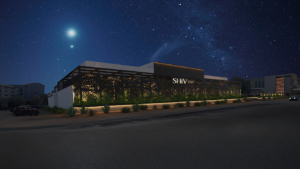It’s the time of year when homes are filled with beautiful and fun decorative lights – but it’s also a dangerous time when fire hazards can threaten the holiday cheer. As the Valley’s largest electric provider, Salt River Project is encouraging customers to stay safe this holiday season as they plug in holiday lights, surge protectors and extension cords.
Each year, hundreds of homes are damaged or destroyed by fires that start with overloaded circuits, Christmas trees or holiday lights, according to the National Fire Protection Association.
“We can’t stress enough the importance of making sure you don’t overload outlets or extension cords. We also encourage customers to check holiday lights and power cords before plugging in to make sure they are in proper, working condition. The desert heat can do a lot of damage to these stored items throughout the year,” said SRP Safety Connection specialist Regina Lane-Haycock.
Below are some safety tips to remember:
• Don’t overload outlets or extension cords.
• Check each set of lights, new or old, for broken or cracked sockets, loose connections or frayed or bare wires. Discard all damaged cords.
• Indoors or out, use only lights that have been tested for safety. The lights should have the Underwriters Laboratories (UL) label.
• Uncoil extension cords completely before using, and be sure to place them away from heat sources and bulbs.
• Unplug tree lights and decorative outdoor lighting before leaving the house or going to bed.
• Indoor and outdoor automatic lighting timers can be used to ensure that lights are not left on by mistake.
• Keep cords out of water and away from metal objects.
SRP offers free materials to learn more about electric safety. Visit srpnet.com/safety to request materials or for more tips. For tips in Spanish, click here.
SRP is a community-based, not-for-profit public power utility and the largest provider of electricity in the greater Phoenix metropolitan area, serving more than 1 million customers. SRP also is the metropolitan area’s largest supplier of water, delivering about 800,000 acre-feet annually to municipal, urban and agricultural water users.




